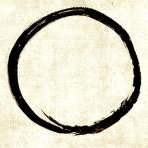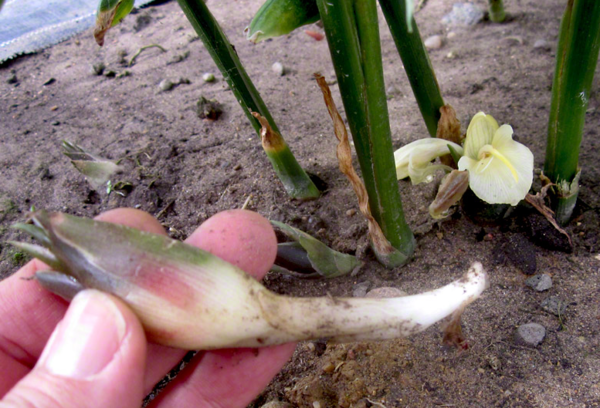-
Posts
380 -
Joined
-
Last visited
-
Days Won
1
Everything posted by FlorianB
-
Robert, The piece was made irregular intentionally. However, I’m not sure, if there are inlays missing. Needs cleaning which can be easily done with the usual means. What about the back side? Florian
-
The lattice is depicted fractional to allude to transientness. Florian
-
Thomas, Yes, they did - remembering Your fantastic pieces! First of all I wanted to correct the Kyo Sukashi imputation (my personal favorite) without daunting a young collector. I thought also of Kinai but didn’t dare to write it down because of my limited knowledge. Florian
-
Doesn't look like Kyo Sukashi (or Heianjo sukashi). It might be based on their composition, but it lacks their elegance and such modelled sukashi is untypical. What about Shoami? Best Florian
-
Fish bones indeed, there was a detailed report on this topic some time ago in the Token Bijutsu magazine, alas I don't know which issue.
-

NBTHK Hoan attributed Tsuba early edo period Maede mon
FlorianB replied to Lexvdjagt's topic in Sold Archive
Dimensions? -
https://www.aoijapan.com/set-of-tosogu:tomei:tsuba-kozuka-fuchi-kashira-menuki-ura-gawara-kurikata-nbthk-juyo-tosogu-65th-millet/ Wonderful set - alas, not for small pockets! Florian
-
Agreed, one of those abstract motives which were made with the intent to confuse the viewer. Personally I tend to recognize a floral motif. However, there are some Higo Jingo Tsuba with an abstract design called butterfly. One of these here: http://world.seiyudo...m/product/tu-040415/ Maybe there's a connection? Best, Florian
-
- 95 replies
-
- 14
-

-

-

More Philosophy? What is it that appeals to you in tsuba?
FlorianB replied to Winchester's topic in Tosogu
That’s right generally, but I can imagine, that there were also warriors who chose more showy pieces because they could afford them and/or want to boast. Especially in pre-Edo times when social rules were not as strict as under the Tokugawa bakufu. Florian -

More Philosophy? What is it that appeals to you in tsuba?
FlorianB replied to Winchester's topic in Tosogu
For me it is the art itself, the combination of design and workmanship. In all those years I saw a lot of Tsuba and interestingly most of them don’t appeal to me. I flip through the dealer’s sites or look at the offerings at meetings, but only a handful catch my eye. If I buy pieces it is out of interest or for studies. But every few years there’s one which arouse the ambition to possess them in a flash. I can’t tell why, maybe they look perfect to me. Those I esteem especially. Best, Florian -
Dan, the sawastika is called manji 卍, the pattern on the second one is called sayagata 紗綾形. There are many Tsuba with this auspicious pasttern. Here's one of mine with some kind of manji: Best, Florian
-
I know only round nanako grains. Maybe the remark refers to the arrangement itself? On Tsuba these are usually round, on Fuchi or Kozuka they are linear. Example I showed recently in another thread. Best, Florian
-
Who knows - maybe it's a start! Enjoy and learn, Best, Florian
-
Next time it seems wise to trust the suggestions of Your dealer. If the depicted blade is the content of Your sword it looks O.K.. Not much to be recognized on the pictures, but there seem to be no faults. I think it's Shinto but You said Showa-to...? Florian
-
I just wanted to know, if there are tagane which would explain the deformations of the nakago-ana. Incidentally I was thinking of a Tsuba for Gendaito (IF it is original). I wonder about the material. The seppa dai looks like brass, the plate itself like brownish copper… Florian
-
Have You got a photo from the backside? (of the Tsuba, not the paper ) Florian
-
Emil, this paper is by the dealer himself and thus his personal opinion. At least I’m not convinced by this statement. Florian
-
Emil, sorry for my straightforward judgement because now I saw You bought it already. There is no necessity to reveal this dealer, but maybe You can show the paper? Best, Florian
-
I’m not an expert, but it seems a chinese fake. At first glance the strange bean-shaped form of the hitsu-ana and the asymmetrical sides of the nakago ana look not right. I don't know neither the dealer nor the paper but I would recommend hands off. Florian
-
Thanks for this example. So it seems indeed an unusual design. Interestingly the Met Tsuba is in the Kyo Sukashi style like mine, too. So I dare the assumption that this type of myoga is specific to Kyo Tsuba. But the reason for this remains hidden. I want to clarify that the usually depicted Myoga (zingiber mioga) are the edible buds of this plant growing out of the rhizome. The blossom itself (on the left picture in between the stems) is shaped somewhat like an orchid. So I became confused, why there are those peculiar appendages. Florian
-
We know that myoga are a frequently found on tsuba. But on one of mine there’s a peculiar daki-myoga to be seen and in vain I tried to research similar ones for comparison. At the top there’s an appendage (probably blossoms). It seems not to be a kamon because I haven't found it in the usual compilations. Any suggestions? Thanks, Florian
-
A modest contibution of mine, a coastal scene with plovers. Shibuichi with details in shakudo, copper and gold. Probably late Edo. Florian
-
Peter, that seems to clarify it. Right from the start I recognized a „hidden“ or stylized centipede (and still I do) - a coincidence based on the long „tentacles“ and the bend form. Florian
-
Dale, Thank You for this information. Sorry for using the wrong word, I meant centipede of course. Interesting combination anyway. Florian







_Roscoe_1804.jpg.631032991cd5811bc849512694f2f6b0.jpg)

